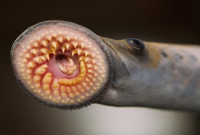Support strong Canadian climate journalism for 2025
EDMONTON — The Alberta Energy Regulator says it's looking for an investigator to dig into releases of oilsands tailings and tailings-contaminated water that weren't made public for nine months.
In a statement released Tuesday, the regulator said it's seeking a "qualified, impartial, third-party body" to consider how it notified First Nations, governments and other stakeholders about two releases at Imperial Oil's Kearl oilsands mine north of Fort McMurray, Alta.
"I have been in regular contact with (the regulator's) CEO Laurie Pushor, and he assures me he welcomes this third-party review both as an opportunity for an independent recounting of the facts surrounding the (agency’s) response and as an opportunity for (it) to learn and grow as applicable," said the regulator's chairman, David Goldie, in a release.
But one resource law expect said the move is unlikely to answer all the questions building around a body that's supposed to both license industry activity and police its behaviour.
"As a way to restore trust, this is bizarre," said Nigel Bankes, former dean of resource law at the University of Calgary.
Although Imperial notified the regulator in May of discoloured water near one of the tailings ponds, the seepage wasn't disclosed publicly until nine months later after another 5.3 million litres of water containing tailings escaped from a catchment pond.
Area First Nations remain angry about not being kept apprised of the ongoing investigation. Federal Environment Steven Guilbeault called the situation unacceptable. His provincial counterpart Sonya Savage wasn't happy and the Northwest Territories governments enacted a dispute mechanism within a watershed sharing agreement it has with Alberta.
The regulator said the inquiry will consider issues around notification and the timing of notification to Indigenous communities and other stakeholders. It will also consider "other potential process issues."
The inquiry's report is to be made public, the regulator said. However, it has not released any timeline around the hiring of an investigator, what kind of powers it might have or how long the work might take.
The decision to undertake the investigation was made on March 16 but released Tuesday, almost two weeks later.
"The board will have no further comment until it has reviewed the final findings," the regulator said.
Bankes said the move reflects a corporate mentality at an institution that's supposed to be concerned with the public good.
"It fits that mould as opposed to a governmental mould, which says the ultimate person responsible for this, even if it's an arm's-length agency, is the minister of energy because it's his statute.
"(The investigation) deflects criticism, it allows the AER to say we're doing something and it protects the minister. It insulates the government of Alberta."
Officials with the Mikisew Cree First Nation, one of the affected bands, confirmed they weren't notified about the regulator's decision.
The regulator's probe would be the third into what happened around the Kearl releases.
Alberta's information commissioner has opened a probe into whether the regulator had a duty to release information on the releases.
The House of Commons environment and sustainable development committee has invited the head of Imperial as well as the regulator to answer questions. The committee also hopes to hear from Environment Canada, the N.W.T. and seven area First Nations.
No date has been set for that meeting.
This report by The Canadian Press was first published March 28, 2023.






Comments
I guess this reflects a fundamental understanding that nobody trusts the government on this. It's now official that the regulator is understood by everyone to be completely captured, and so for any whitewash to pass the smell test, it has to be done by somebody "impartial", which disqualifies the regulator.
When it inevitably turns out that they hire some outfit of total PR flacks who will write whatever report they're paid for, maybe they can get those guys to hire an impartial FOURTH party.